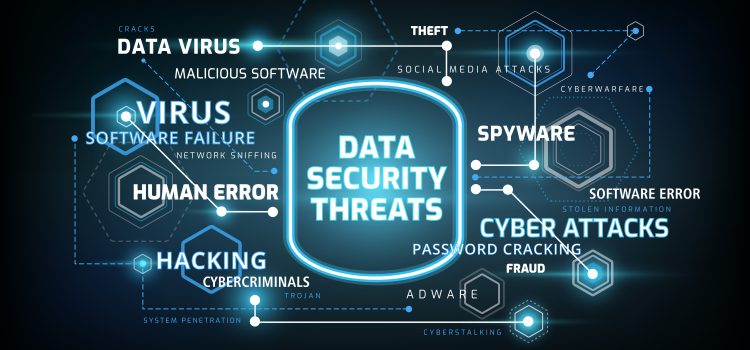
Emerging Trends in Cybersecurity Threats

The landscape of cybersecurity threats is constantly evolving, and in 2024, we are witnessing the rise of AI-driven cybersecurity threats. These threats leverage advanced artificial intelligence to bypass traditional security measures, making them more challenging to detect and mitigate. AI-driven threats can adapt to security protocols, learning from each interaction to enhance their effectiveness. This evolution signifies a significant shift from conventional threats, requiring organizations to adopt more sophisticated defense mechanisms.
Increased sophistication in phishing attacks is another critical trend in 2024. Phishing attacks have become more targeted and personalized, often using AI to craft convincing messages that deceive even the most vigilant users. These attacks are not limited to email but extend to social media and other communication platforms, making them harder to identify and block. The primary aim of these sophisticated phishing attacks is to compromise data protection, highlighting the need for enhanced security awareness and training programs.
Impact of AI on Data Protection
AI-driven cybersecurity threats are reshaping the 2024 data protection landscape. These threats utilize machine learning algorithms to identify vulnerabilities and exploit them in real-time. AI can automate the process of finding weak points in a network, enabling cybercriminals to launch attacks with unprecedented speed and precision. As a result, traditional security measures are often insufficient, necessitating the integration of AI-based defenses to protect sensitive data effectively.
Mitigating AI-based cybersecurity threats is crucial for enhanced data protection in 2024. Organizations must invest in advanced AI-driven security solutions that can detect and respond to threats autonomously. These solutions should incorporate machine learning to continuously improve their threat detection capabilities. Additionally, implementing multi-layered security protocols and regular security audits can help identify and address potential vulnerabilities before they are exploited by AI-driven threats.
Ransomware Attacks and Mitigation Strategies
Ransomware attacks represent one of the most significant rising cybersecurity threats in 2024. These attacks involve encrypting a victim’s data and demanding a ransom for its release. The sophistication of ransomware has increased, with attackers using AI to identify high-value targets and customize their attacks accordingly. The financial and operational impact of ransomware can be devastating, making it imperative for organizations to adopt robust protection measures.
Mitigation strategies are essential for 2024 data protection. To combat ransomware, organizations should implement comprehensive backup and recovery plans, ensuring that critical data can be restored without paying a ransom. Regularly updating software and systems to patch vulnerabilities is also crucial. Additionally, educating employees about the risks and signs of ransomware attacks can prevent initial infections and reduce the overall threat.
Zero Trust Security Model
The Zero Trust Security Model effectively mitigates evolving 2024 cybersecurity threats by assuming that no entity, whether inside or outside the network, can be trusted by default. This model requires continuous verification of every user and device attempting to access resources, ensuring that only authorized entities can gain access. By implementing Zero Trust, organizations can significantly reduce the risk of unauthorized access and data breaches.
Adopting Zero Trust enhances 2024 data protection strategies by providing a robust framework for securing sensitive information. This model emphasizes the importance of identity verification, least privilege access, and continuous monitoring. By integrating Zero Trust principles, organizations can create a resilient security posture that adapts to emerging threats and protects critical data from potential breaches.
Importance of Cyber Hygiene
Cyber hygiene mitigates 2024 cybersecurity threats effectively by promoting best practices that reduce the risk of cyberattacks. Good cyber hygiene involves regular software updates, strong password policies, and routine security assessments. These practices ensure that systems are up-to-date and less vulnerable to exploitation by cybercriminals. By maintaining high standards of cyber hygiene, organizations can prevent many common threats and enhance their overall security.
Strong cyber hygiene practices ensure robust data protection in 2024. Regularly updating antivirus software, using multi-factor authentication, and conducting employee training on cybersecurity awareness are essential components of a comprehensive cyber hygiene strategy. These measures help create a security-conscious culture within the organization, reducing the likelihood of successful cyberattacks and protecting sensitive data from potential breaches.
Role of Government Regulations

Government regulations play a crucial role in mitigating cybersecurity threats in data protection. Regulations such as the General Data Protection Regulation (GDPR) and the California Consumer Privacy Act (CCPA) set stringent standards for data protection and privacy. These regulations require organizations to implement robust security measures and report data breaches promptly, ensuring that they take proactive steps to safeguard sensitive information.
Regulations enforce standards to counteract evolving cybersecurity threats by establishing clear guidelines for data protection. Compliance with these regulations is not only a legal requirement but also a best practice for enhancing security. Governments continue to update and refine these regulations to address emerging threats, providing a framework for organizations to follow in their efforts to protect data and maintain trust with their stakeholders.
Cloud Security Challenges
Emerging cybersecurity threats in 2024 data protection are increasingly targeting cloud environments. As more organizations migrate to the cloud, the attack surface expands, providing cybercriminals with new opportunities to exploit vulnerabilities. Threats such as data breaches, account hijacking, and insecure interfaces pose significant risks to cloud security, making it essential for organizations to adopt comprehensive security measures.
Cloud security challenges in mitigating cybersecurity threats involve ensuring that data stored in the cloud is protected from unauthorized access and breaches. Organizations must implement strong encryption, access controls, and continuous monitoring to safeguard cloud environments. Additionally, selecting reputable cloud service providers with robust security protocols can help mitigate risks and ensure that sensitive data remains secure in the cloud.
Advanced Persistent Threats (APTs)
APTs are evolving cybersecurity threats in 2024, characterized by their prolonged and targeted nature. These threats involve sophisticated attackers who gain unauthorized access to a network and remain undetected for extended periods. APTs often target high-value information, such as intellectual property and financial data, making them particularly dangerous. The persistence and stealth of APTs require advanced detection and response capabilities to mitigate their impact.
Data protection strategies against APTs in 2024 involve implementing advanced threat detection systems that can identify and respond to suspicious activities in real-time. Network segmentation, regular security audits, and employee training on recognizing social engineering tactics are essential components of a comprehensive defense strategy. By adopting these measures, organizations can detect and neutralize APTs before they cause significant damage.
Future of Cybersecurity Technologies
Advanced AI is poised to counter evolving cybersecurity threats in 2024. AI-driven security solutions can analyze vast amounts of data to identify patterns and anomalies indicative of cyber threats. These solutions can respond to threats autonomously, reducing the time required to detect and mitigate attacks. The integration of AI in cybersecurity provides a proactive approach to threat management, enhancing the overall security posture of organizations.
Quantum encryption is emerging as a powerful tool to safeguard against 2024 cybersecurity threats. Unlike traditional encryption methods, quantum encryption leverages the principles of quantum mechanics to create virtually unbreakable security protocols. This technology can protect sensitive data from even the most advanced cyberattacks, ensuring that information remains secure. As quantum computing advances, quantum encryption will play a critical role in the future of data protection.










